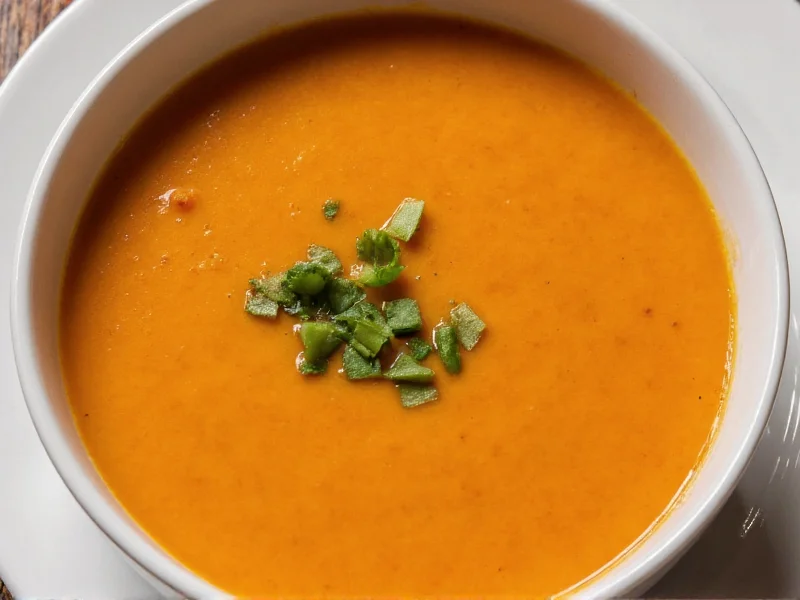Soup drops have gained popularity among home cooks seeking quick flavor solutions without compromising on taste. Unlike standard bouillon cubes, these concentrated flavor enhancers often contain additional umami-boosting ingredients like yeast extract or mushroom powder that create deeper, more complex broth profiles. Understanding how to properly incorporate soup drops into your cooking repertoire can transform simple weeknight meals into restaurant-quality dishes with minimal effort.
What Exactly Are Soup Drops?
Soup drops represent a modern evolution of traditional soup bases. These compact flavor concentrates typically come in two primary forms: solid cubes that dissolve in liquid or liquid concentrates packaged in dropper bottles. The "drops" nomenclature specifically refers to the liquid variety where precise measurements can be added drop by drop to control flavor intensity.
Manufacturers create soup drops by dehydrating broth components and concentrating the resulting flavors through evaporation or freeze-drying techniques. This process removes water content while preserving the essential taste compounds, resulting in a product with significantly longer shelf life than fresh broth while maintaining robust flavor potential.
Soup Drops vs. Traditional Broth Alternatives
Understanding the differences between soup drops and other broth alternatives helps home chefs make informed choices for their culinary needs. The following comparison highlights key distinctions:
| Product Type | Concentration Level | Shelf Life | Flavor Complexity | Storage Requirements |
|---|---|---|---|---|
| Soup drops (liquid) | Extremely high (1:100) | 18-24 months unopened | Complex, layered flavors | Cool, dark place |
| Soup drops (cubes) | Very high (1:50) | 12-18 months | Moderate complexity | Dry environment |
| Traditional bouillon cubes | Moderate (1:20) | 6-12 months | Basic savory profile | Dry environment |
| Homemade stock | Natural concentration | 4-6 months frozen | Most complex profile | Refrigeration or freezing |
Key Ingredients in Quality Soup Drops
The most effective soup drops contain a carefully balanced blend of ingredients that work synergistically to create rich, satisfying flavors. High-quality products typically include:
- Dehydrated vegetables - Carrots, onions, and celery form the flavor foundation
- Umami enhancers - Yeast extract, mushroom powder, or tomato paste for depth
- Herbs and spices - Thyme, bay leaves, and black pepper for complexity
- Natural flavor compounds - Often derived from roasted meats or vegetables
- Minimal preservatives - High-quality products avoid artificial additives
When selecting soup drops, check for products with recognizable ingredients and avoid those containing excessive sodium, artificial flavors, or unnecessary fillers. The best options deliver robust flavor with just a small amount, allowing home cooks to control sodium levels while still achieving professional-quality results.
Practical Applications in Everyday Cooking
Soup drops shine in various culinary applications beyond their namesake soup preparations. Professional chefs and home cooks alike utilize these concentrated flavors for:
- Gravies and sauces - Dissolve one cube in warm liquid before thickening
- Grain cooking liquid - Replace water with broth for rice, quinoa, or couscous
- Marinades and brines - Add depth to meat preparations
- Vegetable enhancements - Boost flavor in roasted or steamed vegetables
- Quick pan sauces - Deglaze pans with a small amount of liquid and one drop
For optimal results when using liquid soup drops, add them toward the end of cooking to preserve delicate flavor compounds. Solid cubes work best when dissolved in warm liquid before incorporation. Remember that quality soup drops require significantly less product than traditional bouillon—start with half the recommended amount and adjust to taste.
Storage and Shelf Life Considerations
Proper storage maximizes the shelf life and flavor potency of soup drops. Liquid varieties maintain best quality for 18-24 months when stored in a cool, dark place away from heat sources. Once opened, refrigerate liquid drops and use within 6 months for optimal flavor. Solid cubes remain viable for 12-18 months when kept in airtight containers away from moisture.
Freezing soup drops extends their usability—simply place cubes in freezer bags or freeze liquid drops in ice cube trays before transferring to storage containers. Frozen soup drops maintain quality for up to 2 years. Always check for signs of spoilage including off odors, discoloration, or clumping before use.
Creating Balanced Flavors with Soup Drops
Mastering soup drops requires understanding flavor balancing principles. The concentrated nature means small adjustments create significant changes in final taste. When incorporating soup drops into recipes:
- Begin with less than package directions suggest—most home cooks overestimate needed amounts
- Allow time for flavors to meld—simmer for at least 10 minutes after adding
- Counteract excessive saltiness with acid (lemon juice or vinegar) or additional liquid
- Enhance depth with aromatic vegetables sautéed before adding liquid
- Combine with fresh herbs added at the end for brightness
For those concerned about sodium content, look for reduced-sodium varieties or dilute standard products with additional water while compensating with extra herbs and spices. The most successful applications treat soup drops as flavor foundations rather than complete seasoning solutions.











 浙公网安备
33010002000092号
浙公网安备
33010002000092号 浙B2-20120091-4
浙B2-20120091-4